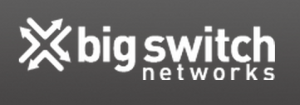Open Networking is the New Normal
The data center is in a constant state of transition. What was once home for rows upon rows of propriety and often siloed equipment based on closed-architecture designs, the modern day data center is now filled with white box solutions serving various functions but working in a harmonious or converged manner.
Several key factors are driving the change to white box or open hardware – ROI, flexibility and customizability of design, ease of implementation, and the avoidance of vendor lock-in along with the high price-tag it can bring. The rise of white box hardware started with servers and storage, and now a movement towards the adoption of open networking has gained quite a bit of traction. The
Open Compute Project (OCP) movement is driving creation of bare metal switches, such as Open Switches, that are designed to be open and disaggregated. This white box model for switching enables users to deploy, monitor, and manage networking alongside servers and storage at a much lower price-point than a traditional network switch.
Scaled Networking Simplified
With a white box switch, the OS layer is decoupled from the hardware itself which allows users to independently select the best-of-breed components and networking software stack Continue reading

